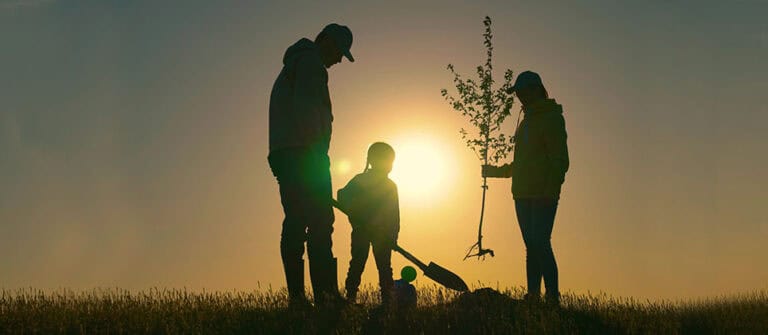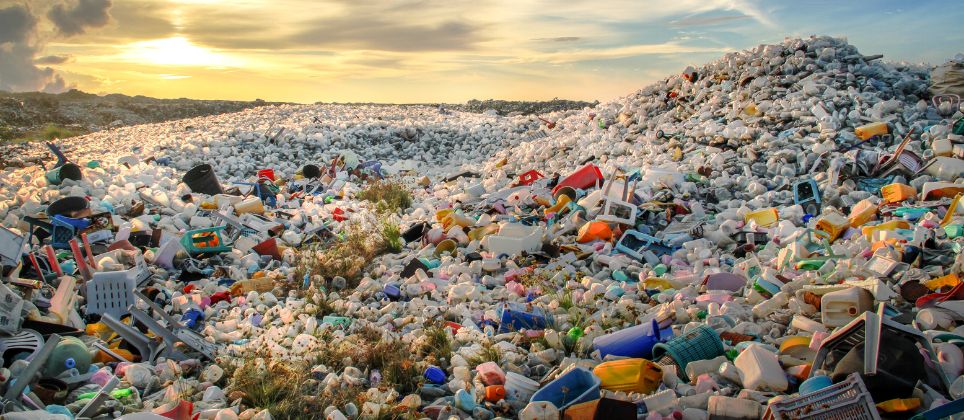IGEL Blog

Take action with Forest Restoration and make an impact on Generation Restoration
“We cannot turn back time, but we can grow forests, revive water sources, and bring back soils. We are the generation that can make peace with land”
– UN Environment Programme
This June 5th the spotlight is on “Our land. Our future. We are #GenerationRestoration” for World Environment Day to drive awareness of solutions to restore land, halt desertification and build drought resilience. World Environment Day 2024, led by the UN Environment Programme (UNEP), has grown to be one of the largest global platforms for environmental outreach. Every year it mobilizes hundreds of millions of people to protect the planet by building momentum for climate action by rallying support for vital ecosystems restoration work among individuals, companies and foundations.
One such foundation is Plant-for-the-Planet, a global leader in ecosystem restoration. Read this interview with Sagar Aryal , Chief Technology Officer and Board Member at Plant-for-the-Planet to learn how this foundation restores forests and ecosystems with local communities, company sponsorships and technology.
Q1. How does Plant-for-the-Planet support the UN Decade on Ecosystem Restoration?
The UN Decade on Ecosystem Restoration is a joint effort of global organizations to restore the world’s ecosystems to get humanity on track for a more sustainable future. As a global movement, Plant-for-the-Planet is an official partner of the UN decade and plays a central part in educating and empowering the next generation on climate justice and ecosystem restoration, among other work. Plant-for-the-Planet is part of #GenerationRestoration.
Q2. Can you summarize how trees can reduce CO2 emissions.
CO2 is also called carbon dioxide. It is a gas that is part of our atmosphere. It is produced by burning fossil fuels and is one of the greenhouse gases that causes climate change.
Trees absorb carbon dioxide from the atmosphere. In the process called photosynthesis they split the carbon from the oxygen atoms and use it to build their biomass – like wood and leaves. So, trees don’t reduce CO2 emissions – only humans can do that -, but they help us to get rid of some of the emissions. Unfortunately, we don’t have enough trees on Earth anymore to offset all our CO2 emissions and the CO2 concentration in the atmosphere is constantly rising. That’s why we need to radically reduce emissions and urgently need more forests!
Q3. How do you select global Plant-for-the-Planet restoration projects? (Yucatàn, Ghana, Andalucia)
Each of our three projects follows a different agenda, which is closely related to the geographic area, where they are located and the needs of the community.
In Yucatàn, we are working to restore the forest landscapes in and around the San Felipe Bacalar Natural Protected Area, as well as the Balam-Kú nature reserve and Calakmul Biosphere Reserves. Our sites have suffered different levels of degradation: Some areas are recently abandoned cattle pastures with only a few scattered trees left. Other areas were never fully deforested, but either economically valuable trees have been logged or significant proportions of the forest were destroyed by fires, leaving behind relatively species-poor vegetation. In other areas, the forest is still full of many species, and we are either conserving it or letting it grow back on its own.
We decided to work in Mexico as it is part of the mega-biodiverse areas in the world. Also, the trees we plant here grow a lot faster than trees in Europe do. This way they absorb more carbon dioxide in a shorter period and help us battle the climate crisis.
Plant-for-Ghana is a hybrid restoration project. We believe sustainable restoration is the best way to bring back the lost forest in the Northern Savannah Ecological Zone of Ghana, thereby contributing to Plant-for-the-Planet’s goal to plant one trillion trees worldwide.
This hybrid project combines two approaches: the planting of native species and the planting of agroforestry species in mixed stands. By planting high diversity tree mixes in deforested areas, we not only ensure that restored forests are resilient to the ongoing threats of the climate crisis, but also establish a multi-functional forest with more productive forest stands. Growing both native tree species that will not be harvested and agroforestry species ensures that local communities can also benefit from our work.
In Andalusia, Plant-for-the-Planet Spain has set the goal to recover the lost forests around Granada and Doñana. In Doñana, approximately 9,000 ha of forest in the Doñana National Park were lost in the 2017 Las Peñuelas wildfire. The project is a collaboration with the Directorate General for the Natural Environment, Biodiversity and Protected Spaces of the Andalusian Regional Government.
In Granada, we are restoring and expanding the Green Belt that is helping to mitigate pollution.
Both projects have a direct impact on the local communities and will contribute to a more sustainable future for younger generations. The aim is to plant a total of 1 million trees by 2030.
Q4. How do partnerships with companies such as IGEL Technology support your mission?
Plant-for-the-Planet collaborates with companies like IGEL that are genuinely committed to ecosystem restoration and combating the climate crisis. Our empowerment programs, platform, and IT solutions are provided free of charge, funded by our partners and donors. Additionally, partners such as IGEL directly contribute to positive impacts by funding tree plantings in projects like those in Mexico and Ghana. With effective climate communication, we can collectively reach a wider audience and raise awareness for this urgent matter.
Q5. How does Plant-for-the-Planet manage global restoration projects?
At Plant-for-the-Planet we developed free software tools like FireAlert and TreeMapper to help plan, monitor, and improve restoration efforts, making projects more effective. These tools allow us to monitor restoration areas and fire risks in real-time.
Additionally, we developed standards for forest restoration, natural regeneration, mangroves, and conservation projects to guide our efforts. We follow a two-step verification process: off-site by reviewing the project’s restoration plan, and on-site by conducting visits to ensure compliance with our standards. Only projects that fulfill our standards can collect donations via our platform. Projects that do not meet all standards or need help in other ways can make use of our free restoration advice.
Q6. Where does Plant-for-the-Planet stand in their mission to restore up to 1 trillion trees?
The world currently has 3 trillion trees and the potential to restore one trillion lost trees. It is essential that we protect our existing forests and bring those lost forests back.
However, we are currently still losing about 10 billion trees every year. That is roughly equivalent to the total number of trees in Germany. While the deforestation rate has gone down substantially since its peak in the 1980s, we are still moving further away from our goal every year.
Plant-for-the-Planet is working hard with our collaborators to reverse that trend. Our tools like tracer.eco and our forest rangers help to protect existing forests while we regrow destroyed forests. Through the Plant-for-the-Planet platform 86 million trees have already been donated.
Q7. What can a person do to support restoration projects?
Many restoration projects are nonprofits organized by civil society. If you find one in your neighborhood, you can probably offer a helping hand. If you can’t find a project where you can get active, you can go to our platform and select from more than 250 projects worldwide that need financial support to reach their restoration goals. You can donate on the platform. It is a very simple process. But you can also create a membership page, set yourself a planting goal and invite your friends to join you. This way you will help us to raise awareness and multiply your contribution.
On World Environment Day 2024, join Generation Restoration, take action to grow forests, revive water sources, and bring back soil by supporting restoration projects with Plant-for-the-Planet.
You can plant trees with IGEL and Plant-for-the-Planet and plant 24,000-trees in 2024


